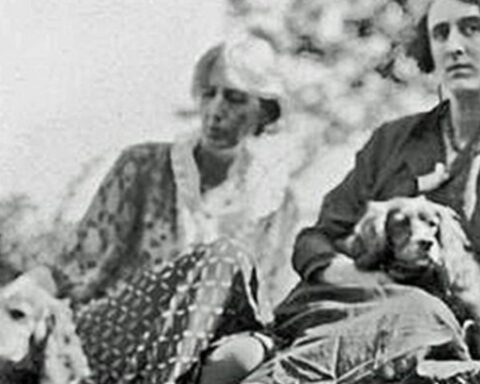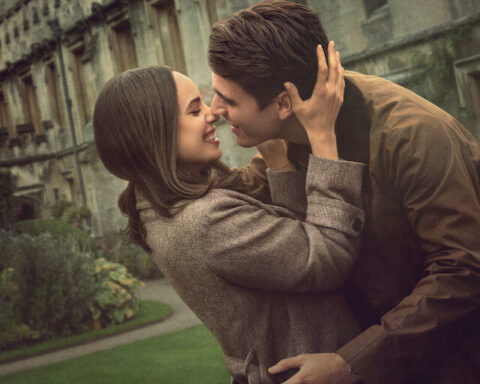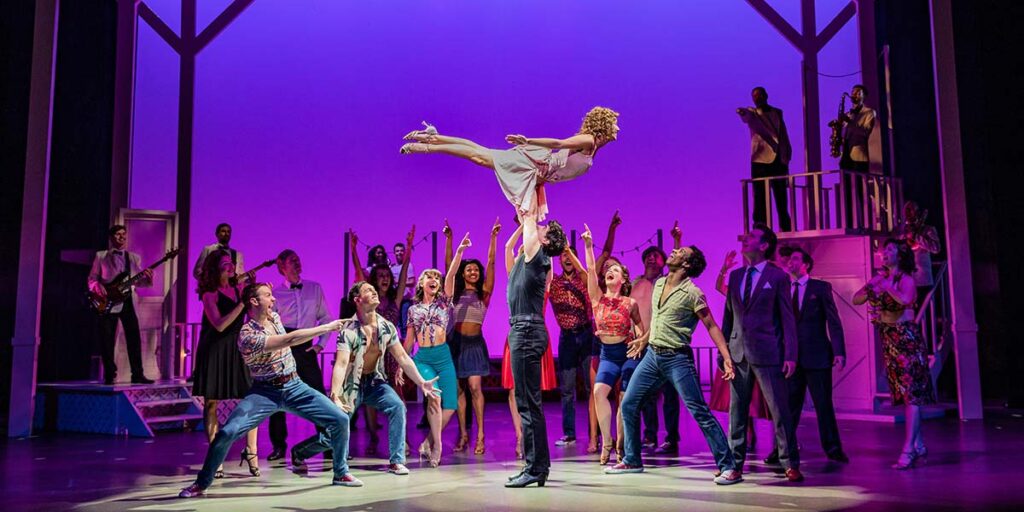In the realm of contemporary ballet, Wayne McGregor’s “Woolf Works” stands as a paragon of innovative choreography and intellectual homage. This avant-garde triptych ballet, created in 2015 for The Royal Ballet, seeks to encapsulate the essence of Virginia Woolf’s literary oeuvre, breathing life into her narrative complexities, psychological depth, and experimental prose. Over the span of three acts, McGregor’s choreographic ingenuity, combined with Max Richter’s evocative score and the profound performances of the dancers, coalesces into a transformative experience that reverberates with the echoes of Woolf’s genius. This review endeavors to delve into the intricate layers of “Woolf Works,” unraveling the ballet’s intellectual rigor, poetic resonance, and its profound homage to Virginia Woolf.

Conceptual Framework: An Intellectual Tapestry
“Woolf Works” is an ambitious endeavor that draws its conceptual framework from three of Virginia Woolf’s seminal novels: “Mrs. Dalloway,” “Orlando,” and “The Waves.” Each act of the ballet is meticulously designed to reflect the thematic intricacies and narrative structures of these works, creating a dialogue between literature and dance that transcends conventional boundaries.
The tripartite structure of “Woolf Works” is itself a reflection of Woolf’s innovative narrative techniques, particularly her use of the stream-of-consciousness. McGregor’s choreography embodies this technique through fluid, continuous movement that mirrors the unbroken flow of thoughts and memories in Woolf’s prose. The result is a ballet that not only tells a story but also immerses the audience in the psychological and emotional landscapes of Woolf’s characters.
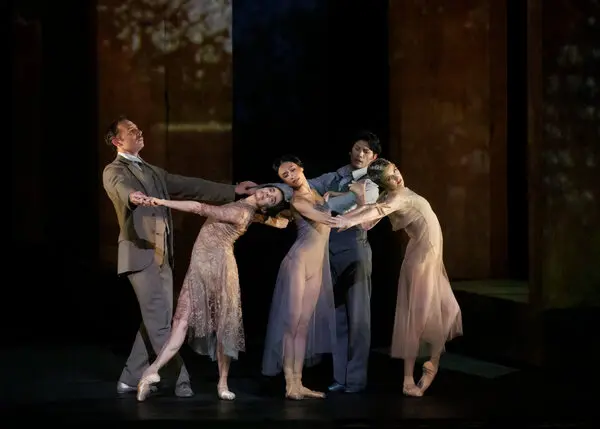
Act I: “I now, I then” – The Temporal Elegance of “Mrs. Dalloway”
The first act, titled “I now, I then,” draws inspiration from Woolf’s 1925 novel “Mrs. Dalloway.” This novel is renowned for its intricate exploration of time, memory, and existential reflection, themes that McGregor captures with striking eloquence. The act is anchored by the performance of Alessandra Ferri as Clarissa Dalloway, whose portrayal of the character’s internal struggles and ephemeral moments of clarity is nothing short of mesmerizing.
McGregor’s choreography in this act is characterized by a delicate interplay between past and present, with dancers embodying the shifting temporalities of Clarissa’s memories and reflections. The movements are imbued with a lyrical quality that evokes the fleeting nature of time, much like the ephemeral beauty of a summer’s day—a central motif in Woolf’s novel. The use of repetition and variation in the choreography echoes Woolf’s use of recurring motifs and themes, creating a sense of continuity and resonance.
Max Richter’s score, with its haunting melodies and lush harmonies, amplifies the emotional depth of the act. The music weaves seamlessly with the choreography, creating a multisensory experience that immerses the audience in Clarissa’s world. The poignant strains of the violin, combined with the ethereal tones of the piano, evoke the bittersweet nostalgia and introspection that permeate Woolf’s novel.
The visual design of “I now, I then” further enhances its thematic richness. Ravi Deepres’ video projections and Lucy Carter’s lighting design create a dreamlike atmosphere that blurs the boundaries between reality and memory. The use of fragmented images and shifting light patterns mirrors the fragmented nature of Clarissa’s thoughts, capturing the elusive quality of memory and the passage of time.
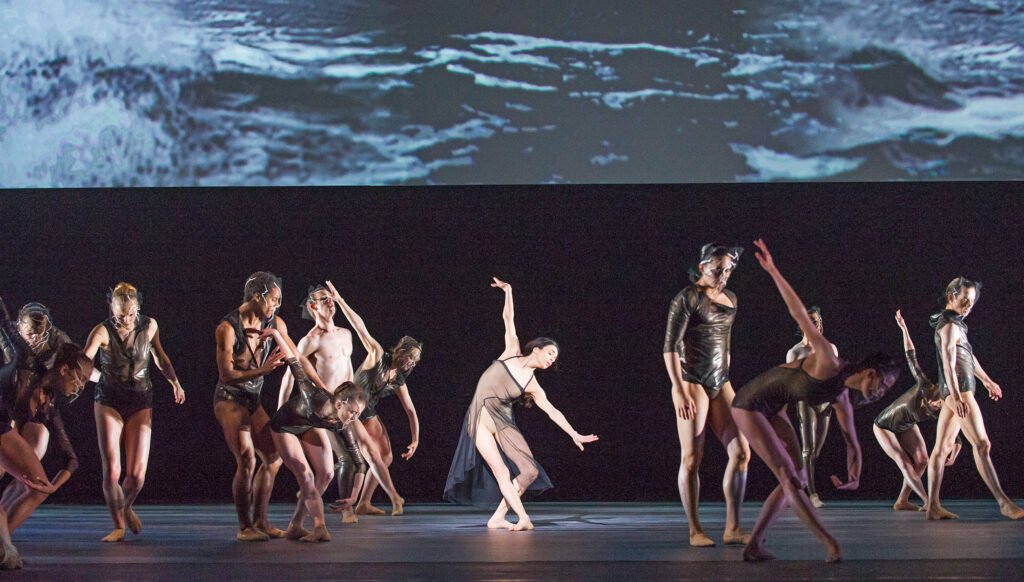
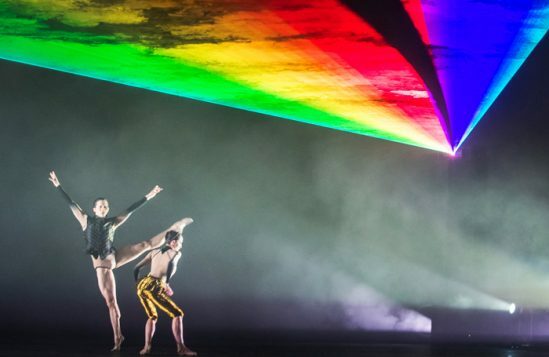


Act II: “Becomings” – The Metamorphic Splendor of “Orlando”
The second act, titled “Becomings,” is inspired by Woolf’s 1928 novel “Orlando: A Biography.” This novel is a playful and profound exploration of identity, gender fluidity, and the nature of time, following the titular character’s journey through centuries and transformations. McGregor’s choreography in this act is a dazzling display of metamorphosis, capturing the fluidity and dynamism of Orlando’s character.
“Becomings” is marked by its vibrant energy and transformative quality, with dancers constantly shifting and evolving in a mesmerizing display of physicality and grace. The choreography eschews traditional gender roles, with dancers embodying both masculine and feminine qualities, reflecting Orlando’s fluid identity. The movements are characterized by their fluidity and versatility, with dancers seamlessly transitioning between different styles and tempos, much like Orlando’s journey through time and identity.
Richter’s score for “Becomings” is a masterful blend of classical and electronic elements, reflecting the novel’s juxtaposition of historical and contemporary themes. The music’s rhythmic drive and pulsating beats create a sense of forward momentum and transformation, while the lush harmonies and melodic lines evoke the timeless beauty of Woolf’s prose.
The visual design of “Becomings” is equally striking, with Deepres’ projections and Carter’s lighting creating a kaleidoscopic world of shifting colors and patterns. The use of vibrant, changing hues and dynamic light patterns reflects Orlando’s transformative journey, creating a visual feast that complements the choreography. The projections often feature abstract images and motifs, suggesting the fluidity and multiplicity of identity and time.

Act III: “Tuesday” – The Poetic Resonance of “The Waves”
The final act, titled “Tuesday,” is derived from Woolf’s 1931 novel “The Waves.” This novel is considered one of Woolf’s most experimental works, characterized by its lyrical prose and fragmented narrative structure. “The Waves” explores themes of loss, memory, and the cyclical nature of life, themes that McGregor captures with profound sensitivity and poetic resonance.
“Tuesday” is a poignant meditation on the passage of time and the interconnectedness of human experience. The choreography is marked by its fluid, wave-like movements, evoking the rhythmic and cyclical patterns of the sea—a central motif in Woolf’s novel. The dancers move with a sense of continuity and interdependence, reflecting the novel’s exploration of the collective and individual consciousness.
Richter’s score for “Tuesday” is deeply evocative, with its lush harmonies and haunting melodies creating a sense of melancholy and introspection. The music’s ebb and flow mirror the rhythmic patterns of the sea, evoking the novel’s themes of continuity and change. The use of string instruments, particularly the cello, adds a rich, sonorous quality to the music, enhancing its emotional impact.
The visual design of “Tuesday” is characterized by its use of light and shadow, creating a dreamlike, almost otherworldly atmosphere. Deepres’ projections often feature images of water and waves, reflecting the novel’s central motif and enhancing the sense of fluidity and movement. Carter’s lighting design, with its subtle shifts and gradations, creates a sense of depth and dimensionality, capturing the novel’s exploration of the inner landscapes of the mind.
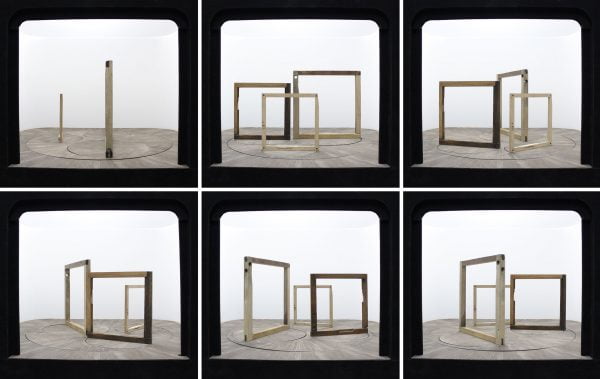
Virginia Woolf’s Inspiration: A Literary and Philosophical Context
To fully appreciate the intellectual and poetic depth of “Woolf Works,” it is essential to understand the literary and philosophical context of Virginia Woolf’s work. Woolf was a central figure in the modernist literary movement, known for her innovative narrative techniques and profound explorations of consciousness and identity. Her work is characterized by its lyrical prose, experimental structures, and deep psychological insight.
Woolf and Modernism: A Revolutionary Approach to Narrative
Virginia Woolf was at the forefront of the modernist movement, a literary and artistic movement that emerged in the early 20th century in response to the rapidly changing world. Modernism was characterized by its break with traditional forms and conventions, embracing experimentation and innovation in both form and content. Woolf’s work epitomizes this spirit of experimentation, particularly her use of the stream-of-consciousness technique and her focus on the inner lives of her characters.
The stream-of-consciousness technique, which Woolf used extensively in her novels, seeks to capture the continuous flow of thoughts, memories, and sensations that make up human consciousness. This technique eschews linear narrative and objective reality, focusing instead on the subjective experiences of the characters. In “Mrs. Dalloway,” for example, Woolf delves into the minds of multiple characters, revealing their innermost thoughts and emotions in a continuous, unbroken flow. This technique creates a sense of intimacy and immediacy, drawing the reader into the characters’ inner worlds.
In “Woolf Works,” McGregor translates this narrative technique into choreographic form, using fluid, continuous movement to reflect the unbroken flow of thoughts and memories. The dancers’ movements are characterized by their lyrical quality and seamless transitions, creating a sense of continuity and resonance that mirrors Woolf’s prose.

Themes of Time, Memory, and Identity
Central to Woolf’s work are themes of time, memory, and identity, themes that McGregor explores with profound sensitivity and insight in “Woolf Works.” Woolf was deeply interested in the nature of time and its impact on human experience, often exploring the interplay between past and present in her novels.
In “Mrs. Dalloway,” Woolf juxtaposes the mundane details of a single day with the characters’ memories and reflections, creating a rich tapestry of past and present. This exploration of time is reflected in McGregor’s choreography, with dancers embodying the shifting temporalities of Clarissa’s memories and reflections. The use of repetition and variation in the choreography echoes Woolf’s use of recurring motifs and themes, creating a sense of continuity and resonance.
Similarly, in “Orlando,” Woolf explores the fluidity of identity and the passage of time through the character’s journey across centuries and transformations. Orlando’s fluid identity and gender transformations challenge conventional notions of identity and time, themes that McGregor captures with his dynamic and transformative choreography. The dancers’ constant shifts and evolutions reflect Orlando’s journey, creating a sense of fluidity and dynamism that mirrors Woolf’s prose.
In “The Waves,” Woolf explores the interconnectedness of human experience and the cyclical nature of life. The novel’s lyrical prose and fragmented narrative structure reflect the rhythmic patterns of the sea, a central motif that McGregor captures with his wave-like choreography. The dancers’ fluid, continuous movements evoke the ebb and flow of the sea, creating a sense of continuity and interdependence that mirrors Woolf’s exploration of the collective and individual consciousness.
Woolf’s Philosophical and Literary Influences
Virginia Woolf was influenced by a wide range of philosophical and literary ideas, which are reflected in her work and in the thematic depth of “Woolf Works.” One of the most significant influences on Woolf was the philosophy of time and consciousness, particularly the ideas of Henri Bergson and William James.
Henri Bergson’s philosophy of time, particularly his concept of “la durée” or “duration,” had a profound impact on Woolf’s exploration of time and memory. Bergson argued that time should be understood as a continuous, flowing experience, rather than a series of discrete, measurable units. This idea is reflected in Woolf’s use of the stream-of-consciousness technique, which seeks to capture the continuous flow of thoughts and memories. In “Woolf Works,” McGregor’s fluid, continuous choreography reflects this philosophical concept, creating a sense of unbroken flow and continuity.
William James’ ideas on consciousness and the self also influenced Woolf’s exploration of identity and the inner lives of her characters. James argued that consciousness is a continuous flow of thoughts and sensations, a concept that Woolf incorporated into her narrative techniques. In “Woolf Works,” McGregor captures this sense of continuous flow with his fluid, lyrical choreography, creating a sense of intimacy and immediacy that draws the audience into the characters’ inner worlds.
Woolf was also influenced by the literary traditions of the past, particularly the works of Marcel Proust and James Joyce, both of whom were pioneers of the modernist movement. Proust’s exploration of memory and the passage of time in “In Search of Lost Time” and Joyce’s use of the stream-of-consciousness technique in “Ulysses” had a profound impact on Woolf’s narrative techniques. In “Woolf Works,” McGregor draws on these literary influences, creating a ballet that reflects the rich tapestry of Woolf’s literary heritage.
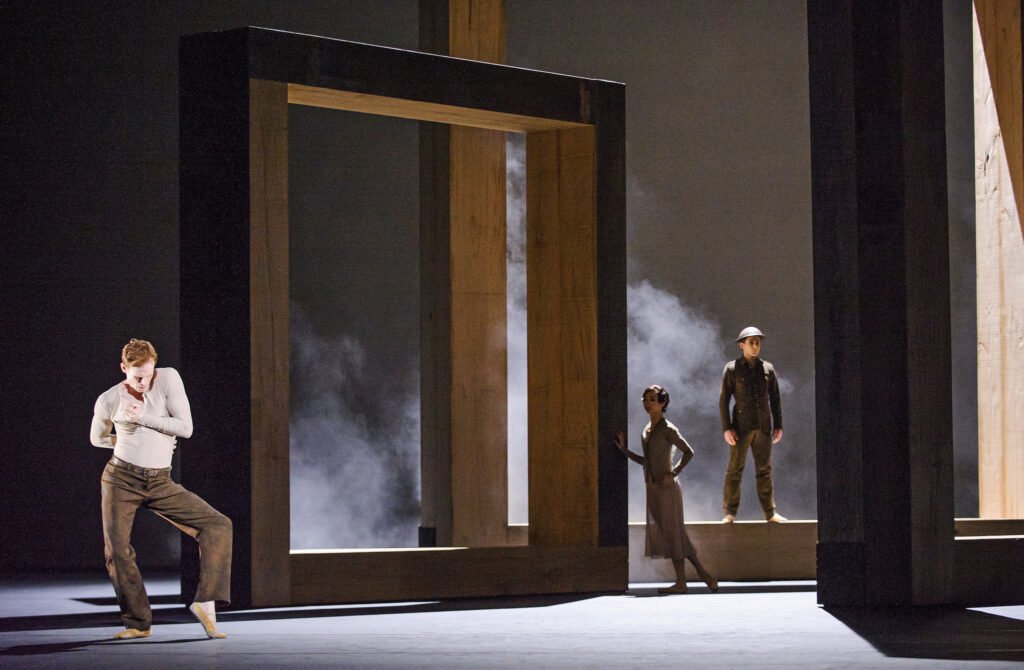
Poetic Resonance: The Language of Dance
One of the most remarkable aspects of “Woolf Works” is its ability to translate the poetic resonance of Woolf’s prose into the language of dance. Woolf’s writing is characterized by its lyrical, almost musical quality, with its rhythmic cadences and rich imagery. McGregor’s choreography captures this poetic quality, creating a ballet that is not only intellectually profound but also deeply evocative and emotionally resonant.
The language of dance, like the language of poetry, is capable of expressing the ineffable, the subtle nuances of emotion and thought that lie beyond the reach of words. In “Woolf Works,” McGregor uses the dancers’ bodies as instruments of expression, conveying the complex psychological and emotional landscapes of Woolf’s characters. The movements are imbued with a lyrical quality that mirrors the rhythmic cadences of Woolf’s prose, creating a sense of harmony and resonance.
Richter’s score enhances this poetic resonance, with its haunting melodies and lush harmonies creating a rich, emotional landscape that complements the choreography. The music’s ebb and flow mirror the rhythmic patterns of Woolf’s prose, creating a multisensory experience that immerses the audience in the world of the ballet.
The visual design of “Woolf Works” also contributes to its poetic resonance, with Deepres’ projections and Carter’s lighting creating a dreamlike atmosphere that reflects the ethereal quality of Woolf’s writing. The use of light and shadow, color and texture, creates a visual poetry that enhances the emotional and intellectual impact of the ballet.

Conclusion: A Triumph of Contemporary Ballet
“Woolf Works” is a triumph of contemporary ballet, a profound and innovative homage to Virginia Woolf’s literary genius. Wayne McGregor’s visionary choreography, combined with exceptional performances, a haunting score, and immersive visuals, creates an unforgettable experience that resonates deeply with both ballet enthusiasts and admirers of Woolf’s work.
The ballet’s intellectual rigor, poetic resonance, and deep emotional impact reflect the rich tapestry of Woolf’s literary heritage, creating a dialogue between literature and dance that transcends conventional boundaries. “Woolf Works” is not merely a ballet; it is a profound exploration of the human condition, a meditation on time, memory, and identity, and a testament to the enduring power of art.
In capturing the essence of Woolf’s work, “Woolf Works” not only pays tribute to one of the greatest writers of the 20th century but also pushes the boundaries of what ballet can be, creating a work of art that is as innovative and timeless as Woolf’s writing. It is a ballet that challenges, inspires, and moves, leaving an indelible impression on all who experience it.

